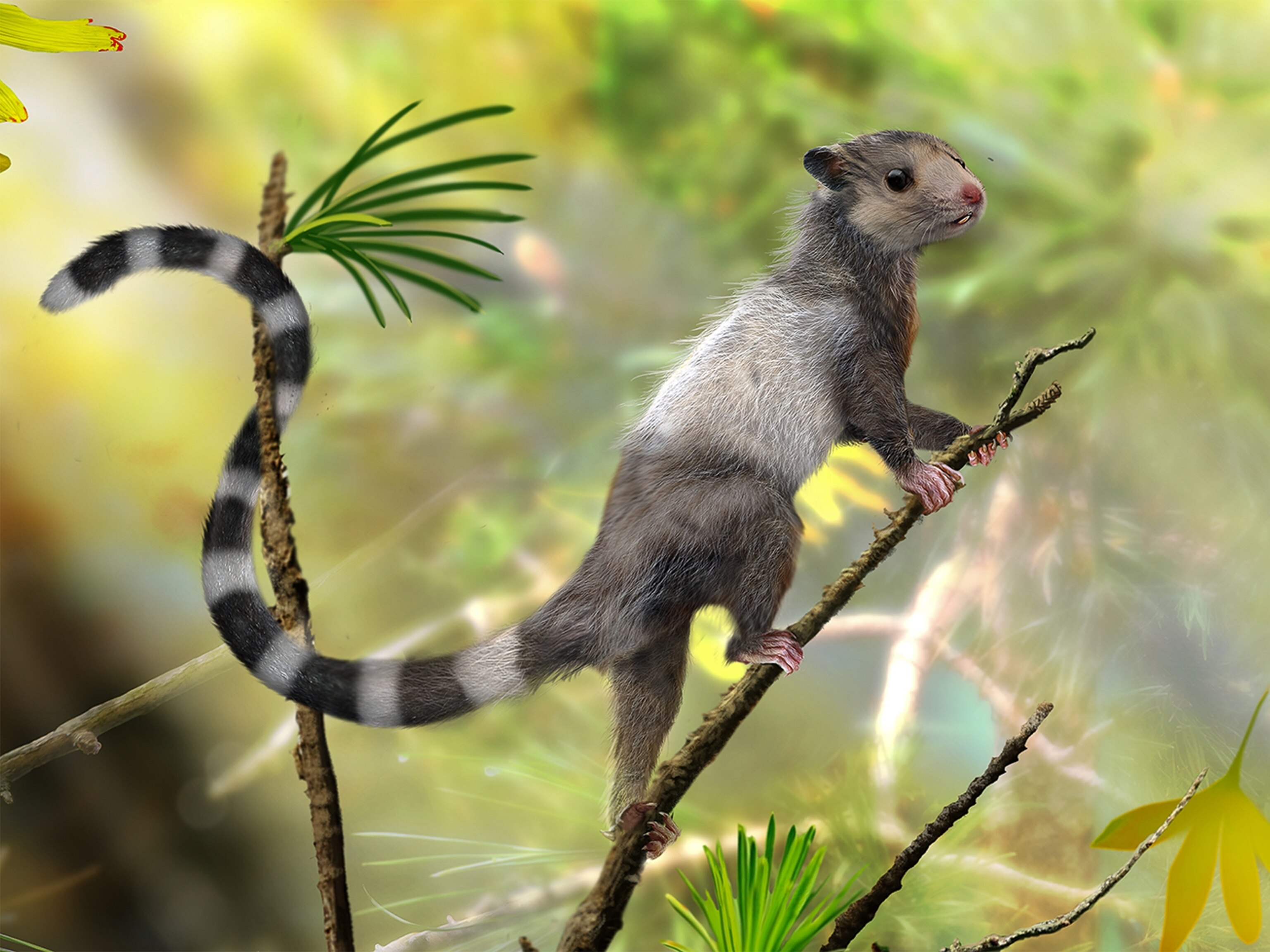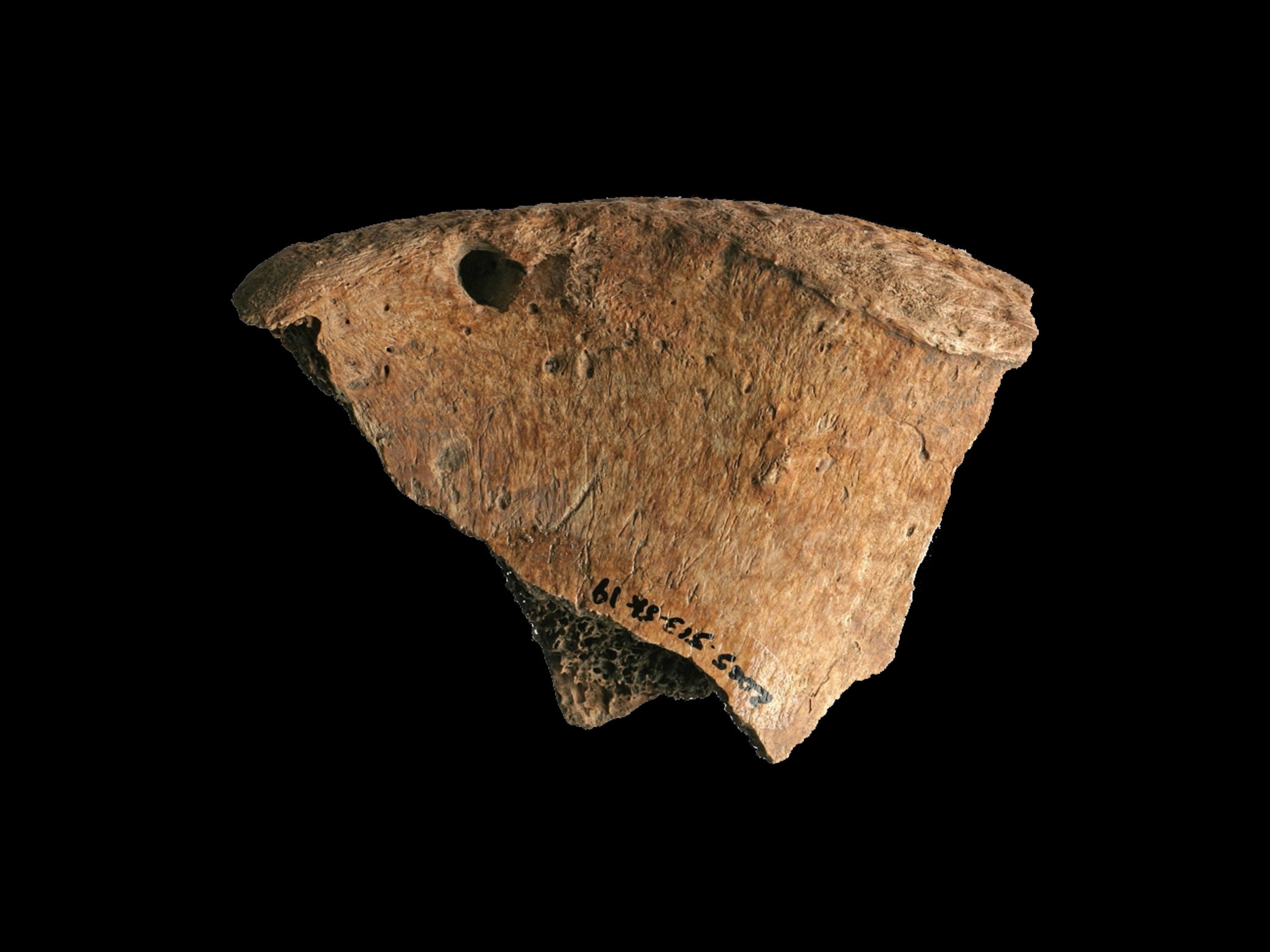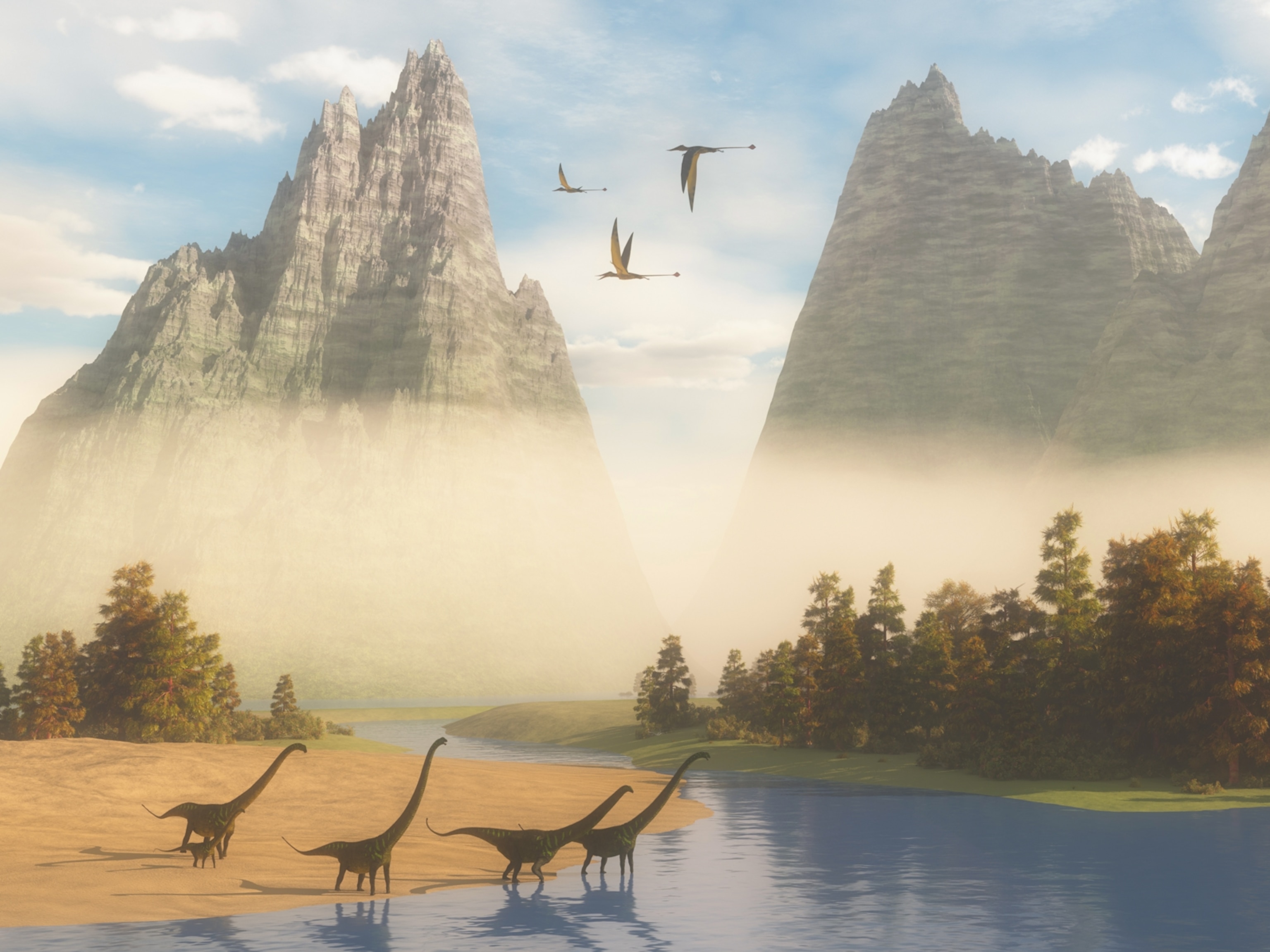
Chisel-Toothed Beasts Push Back Origin of Mammals
Jurassic skeletons show that early mammals didn't just hide in the undergrowth.
Squirrel-size mammals scampered through the trees above dinosaurs' heads, newfound Chinese fossils show, revising our image of the first furry beasts. Three newly described species suggest that mammals evolved earlier, and faster, than previously thought.
Called haramiyids, the recently discovered mammals lived in Jurassic China around 160 million years ago. Slender and graceful, the animals appear to have been specialized for life in the trees, with hands and feet that could grasp branches and a long prehensile tail like today's monkeys.
"The picture that Mesozoic mammals were shrew-like insectivores that lived in the shadow of the dinosaurs needs to be repainted," says American Museum of Natural History paleontologist Jin Meng, a coauthor of the new study. Discoveries during the past few decades, including the haramiyids, have shown that early mammals occupied a variety of habitats. "They walked on the ground; they also swam, dug to burrow, and glided in the forests," Meng says.
The strange mammals were known from teeth and a bit of jaw, but last year Meng and colleagues reported on the first complete haramiyid skeleton. The haramiyid wasn't quite like any living mammal, but was closely related to an extinct group called multituberculates, named for the complex ridges, or cusps, on their teeth.

In the new study, Meng and collaborators report six more haramiyid skeletons from three new species in the journal Nature on Wednesday. The find adds to the shifting picture of mammal evolution during the Mesozoic era, a time when dinosaurs dominated the land.
The emerging picture is that mammal evolution spun off different body types early on, says Oklahoma State University paleontologist Anne Weil. "You can look at small rodents today and see that a mouse and a squirrel are different animals," Weil says, and mammals like the haramiyids show that the same was true in the Mesozoic.
And the new haramiyids do more than expand the image of how our ancient mammalian cousins lived. The relationships among these long-enigmatic creatures suggest that the very first mammals originated early.
The traditional view is that the first true mammals evolved sometime during the Jurassic. Haramiyids, while roughly mammal-like, were thought to fall outside the group.
With complete skeletons to work from, however, Meng and colleagues found that haramiyids were true mammals after all. And given the age of the earliest known haramiyid, Meng says that mammals originated "at least in the late Triassic," between 220 million and 201 million years ago.
"I expect this will be contentious," Weil says, but the study is an important addition to investigations of where mammals came from.
"I think it's going to be part of an argument that will be going on for some time," Weil says, "and I expect paleontology as a whole will learn a lot from questions gleaned from these animals about the antiquity of Mammalia."
Read Brian Switek's blog Laelaps on NationalGeographic.com. Follow him on Twitter, Facebook, and Instagram.





